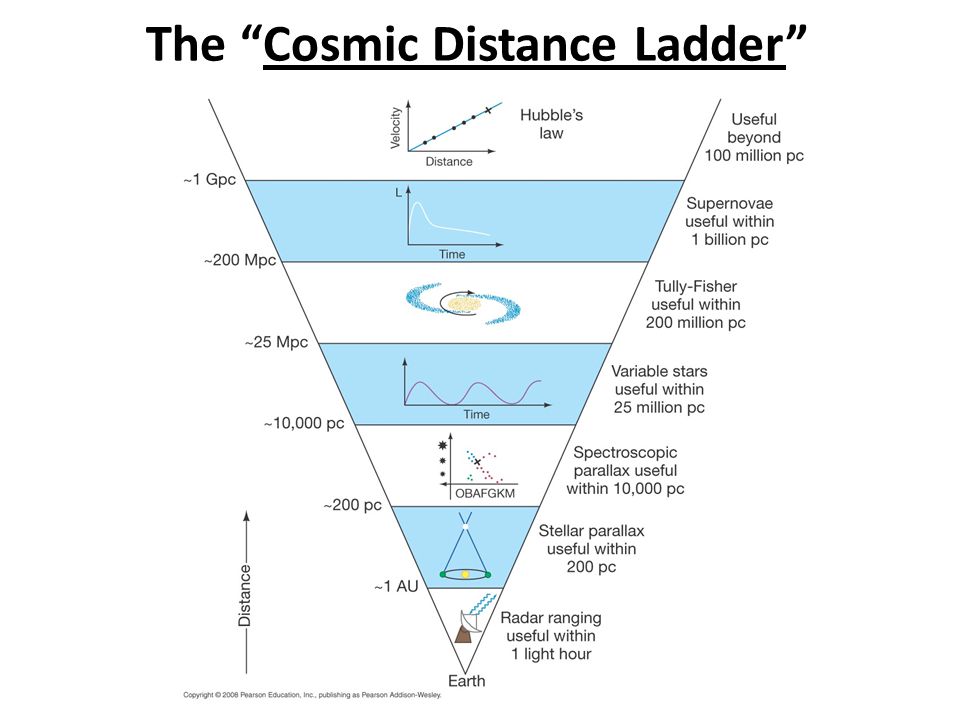If a star has no measurable parallax, what can you infer?
1 Answer
I'm assuming you mean stellar (observable) parallax.
If yes, then it can be inferred that the star is further than 200 parsecs.
Explanation:

The diagram above shows a simplified version of how parallax works. The formula to calculate parallax is
By the way, a parsec is defined as the distance at which an object has a parallax of 1 arcsecond. This distance is approximately 3.26 light years.
However, stellar parallax has its limitations too - there is a limit to how stellar parallax can be used. Parallax angles of less than 0.01 arcsec are too difficult to measure from Earth because of the effects of the Earth's atmosphere. And this limits Earth-based telescopes to measuring the distances to stars about 1/0.01 or 100 parsecs away. Orbiting telescopes have a slightly higher advantage, but they too have a limit of a maximum of 200 parsecs away.
The cosmic distance ladder below will help to clarify the main methods by which astronomers determine the distance of stars, as parallax obviously cannot be applied to all celestial objects.


